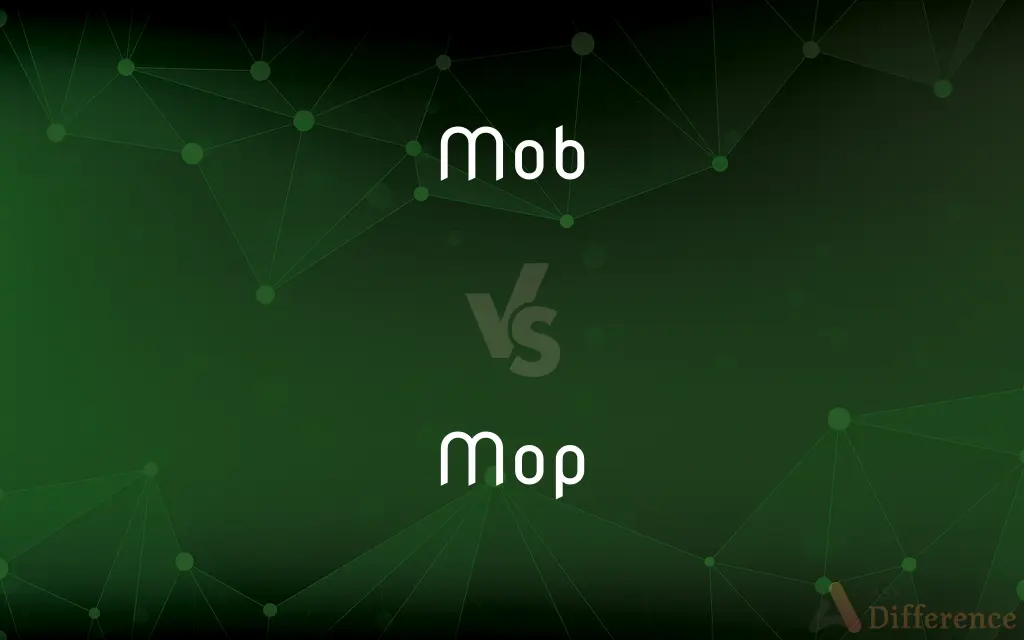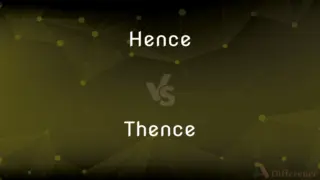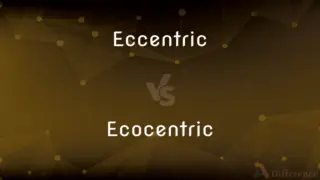Mob vs. Mop — What's the Difference?
By Tayyaba Rehman & Maham Liaqat — Updated on February 29, 2024
A mob refers to a large, disorderly crowd, often engaged in uproar or violence, while a mop is a cleaning tool with absorbent fibers used for cleaning floors.

Difference Between Mob and Mop
Table of Contents
ADVERTISEMENT
Key Differences
Mob and mop, though phonetically similar, diverge significantly in meaning and context. A mob is characterized by its human element, signifying a large group of people, usually gathered for a specific cause or in reaction to an event, often with negative connotations of disorder or violence. In contrast, a mop is inherently inanimate, designed as a tool for cleaning, its purpose rooted in maintenance and hygiene. This contrast between animate and inanimate is foundational to their differentiation.
A mob implies action, movement, and often chaos, a mop is associated with cleaning processes, implying order, restoration, and the routine of maintenance. The former is dynamic, capable of spontaneous and unpredictable behavior, whereas the latter is static, its function and purpose clear and unchanged. This dynamic versus static nature underlines their distinct roles in society and households.
A mob can significantly alter the course of events, influence public opinion, or enact change, sometimes violently. A mop, however, contributes to environmental cleanliness and personal hygiene, affecting immediate surroundings on a much smaller scale. The scale of impact—broad and societal versus individual and local—further distinguishes them.
The emotional and psychological connotations of each term vary widely; mobs are often feared or criticized for their potential for destruction and violence, while mops are viewed neutrally or positively as tools of cleanliness. This difference in perception reflects their roles in human life and society.
"Mob" can also signify a group with a common interest without the implication of disorder, showing versatility in usage. "Mop," however, remains singular in meaning, its variations only extending to types and methods of cleaning. This linguistic flexibility versus specificity highlights another aspect of their distinction.
ADVERTISEMENT
Comparison Chart
Definition
A large, disorderly crowd of people
A cleaning tool with absorbent fibers or sponges
Primary Function
To gather for a cause, sometimes resulting in chaos
To clean floors and surfaces
Nature
Animate, dynamic
Inanimate, static
Scale of Impact
Societal, potentially large
Local, individual
Emotional Connotation
Often negative (fear, criticism)
Neutral or positive (cleanliness)
Compare with Definitions
Mob
A disorderly crowd of people.
The mob outside the courthouse was demanding justice.
Mop
A hairstyle resembling a mop top.
His new haircut looked like a mop.
Mob
A criminal organization.
The mob controlled illegal gambling in the city.
Mop
A cleaning tool for floors.
She used a mop to clean the spilled juice.
Mob
A group of people with a common characteristic.
A mob of fans awaited the singer's arrival.
Mop
To express laziness or lack of energy.
After the hike, they mopped around the house.
Mob
Informally, to crowd around someone.
Fans mobbed the movie star for autographs.
Mop
To clean a surface with a mop.
He mopped the kitchen floor every evening.
Mob
To overwhelm in numbers.
Shoppers mobbed the store for the Black Friday sale.
Mop
A bundle of absorbent material on a stick.
The mop was soaked after cleaning the mess.
Mob
A large or disorderly group of people; especially one bent on riotous or destructive action.
Mop
A mop (such as a floor mop) is a mass or bundle of coarse strings or yarn, etc., or a piece of cloth, sponge or other absorbent material, attached to a pole or stick. It is used to soak up liquid, for cleaning floors and other surfaces, to mop up dust, or for other cleaning purposes.
Mob
To crowd about, as a mob, and attack or annoy; as, to mob a house or a person.
Mop
A household implement made of absorbent material attached to a typically long handle and used for washing, dusting, or drying floors.
Mob
A disorderly crowd of people
Mop
To rub or wipe with a mop, or as with a mop; as, to mop a floor; to mop one's face with a handkerchief.
Mob
Press tightly together or cram;
The crowd packed the auditorium
Mop
Cleaning implement consisting of absorbent material fastened to a handle; for cleaning floors
Mop
To wash or wipe with or as if with a mop;
Mop the hallway now
He mopped her forehead with a towel
Common Curiosities
What is a mob?
A mob is a large, disorderly crowd of people, often associated with uproar or violence.
What is a mop used for?
A mop is used for cleaning floors and surfaces, utilizing its absorbent fibers or sponges.
Is a mop only used for cleaning floors?
Primarily, yes, but mops can also be used on other surfaces depending on their design.
What are the different types of mops?
Types include flat mops, string mops, sponge mops, and steam mops, each designed for specific cleaning tasks.
Can the term "mob" refer to online groups?
Yes, "mob" can describe online groups, especially when they act in a concerted manner, often negatively.
Can "mob" have a positive connotation?
Yes, in some contexts, "mob" can refer to a group with a common interest without negative implications.
How does a mob impact society?
A mob can significantly influence events, public opinion, or enact change, sometimes through violence.
What psychological effects can a mob have on individuals?
Being part of a mob can lead to diminished personal responsibility and increased impulsivity among individuals.
Can a mop be used dry?
Some mops, especially those made of microfiber, can be used dry for dusting floors.
How often should you use a mop?
Frequency depends on the area's usage and cleanliness level; high-traffic areas may need daily mopping.
How do you maintain a mop?
Maintenance involves regular washing, proper drying, and replacing the head as needed to ensure hygiene.
What materials are mops made from?
Mops are made from materials like cotton, microfiber, sponge, or synthetic blends for absorbency and durability.
Why do mobs form?
Mobs form for various reasons, including protest, celebration, or reaction to an event.
Is mobbing a crime?
Depending on the context and actions taken, mobbing can lead to charges like rioting or disorderly conduct.
What is the history of the mop?
The mop dates back to the 1400s, with various innovations over time leading to the modern versions used today.
Share Your Discovery

Previous Comparison
Hence vs. Thence
Next Comparison
Eccentric vs. EcocentricAuthor Spotlight
Written by
Tayyaba RehmanTayyaba Rehman is a distinguished writer, currently serving as a primary contributor to askdifference.com. As a researcher in semantics and etymology, Tayyaba's passion for the complexity of languages and their distinctions has found a perfect home on the platform. Tayyaba delves into the intricacies of language, distinguishing between commonly confused words and phrases, thereby providing clarity for readers worldwide.
Co-written by
Maham Liaqat













































